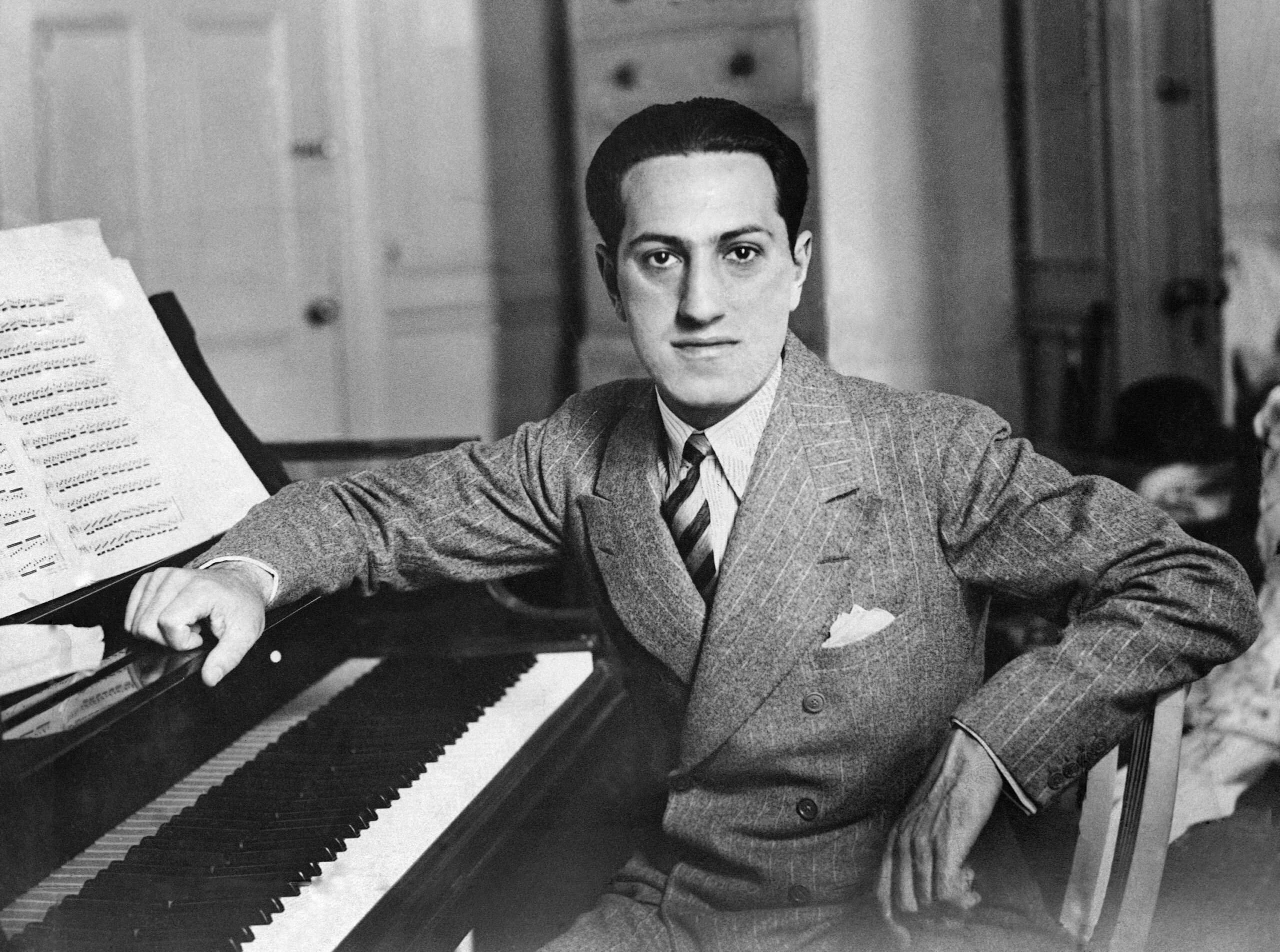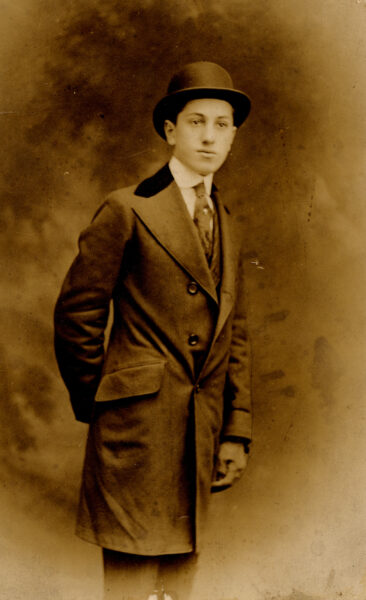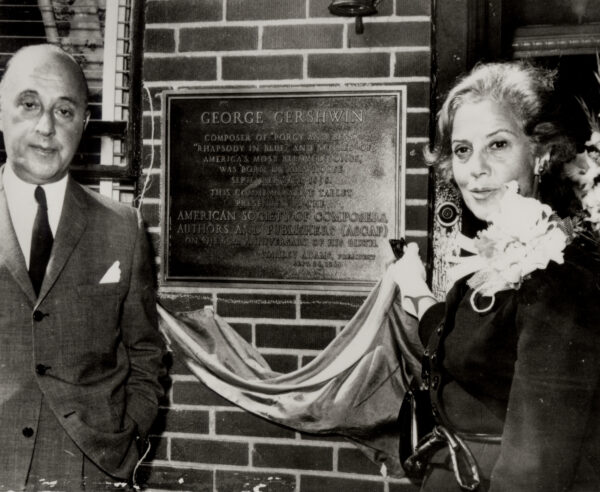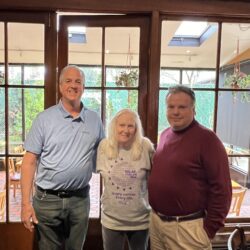
Searching for Gershwin’s Brooklyn roots on his 125th birthday

Photo courtesy of AP
George Gershwin, one of America’s most renowned composers, was born in Brooklyn on Sept. 26, 1898, just nine months after the independent city of Brooklyn consolidated with the other boroughs to create New York City. Likewise, George Gershwin’s songs, with lyrics by his brother Ira, merged the various strains of our nation’s music such as blues, ragtime, jazz and folk into an idiosyncratic sound that captured the pulse and pace of urban life. Gershwin’s journey from his modest beginnings in the Brownsville section to the highest echelons of his city’s cultural life was meteoric, culminating in his untimely death from a brain tumor at the age of 38 on July 11, 1937, leading novelist John O’Hara to famously remark,” I don’t have to believe it if I don’t want to.”

Photo courtesy of the Ira and Leonore Gershwin Trusts
Although it’s tempting to contemplate “what joys untasted,” (to quote from his classic song “Isn’t It a Pity”) George Gershwin’s prolific output mitigates the regret and gives cause to celebrate. On the occasion of his 125th birthday, The Brooklyn Daily Eagle commemorates an especially favorite son by highlighting his origins in and links to the borough, with historical information generously provided by Michael Owen, the Consulting Historian and Archivist for the Ira and Leonore Gershwin Trusts.
By Gershwin Is the Thing
An important aspect of the Gershwin brothers’ story is their sheer pluck thriving amidst the teeming wave of immigration as the 20th century gathered steam. Within 20 years of their parents’ arrival from Russia, the brothers had become quick studies, absorbing the brash sounds and vernacular of the city. In 1918 they articulated their new national tunesmithing with “The Real American Folk Song (Is a Rag).” The lyrics, formatted here exactly as Ira Gershwin intended, perfectly articulate their understanding of the new idiom.
Each nation has a creative vein
Originating a native strain,
With folk songs plaintive and others gayIn their own peculiar way.
American folk songs, I feel,
Have a much stronger appeal.
The real American folk song is a rag –
A mental jag –
A rhythmic tonic for the chronic blues.
For it’s inoculated
With a syncopated
Sort of meter,
Sweeter-
than a classic strain;
Boy! You can’t remain
Still and quiet –
for it’s a riot!
“Though Born in Russia, Sure Enough…”
This is a lyric from the brothers’ 1921 ditty “Mischa, Jascha, Toscha, Sascha,” which continues with “We’re glad that we became relations Of Uncle Sammy.” The number has ancestral overtones inasmuch as the Gershwin story originates in the 1890’s in St. Petersburg in Russia where George’s father Morris was facing induction into the Czar’s army. This prospect, and the hardships Jewish residents experienced in Russia, prompted Morris to up and leave for a better life in Brooklyn where his uncle was a tailor.

Photo courtesy of the Ira and Leonore Gershwin Trusts
George’s mother Rose came to Brooklyn with her parents and her siblings. Her father’s occupation as a furrier ensured that they were of better means financially, making their move one of choice. Morris and Rose knew each other in St. Petersburg and soon reconnected in the United States on Manhattan’s Lower East side of Manhattan. Morris was a shoe cutter, a highly prized skill at that time. His income and the relative financial security of Rose’s family allowed the Gershwins to live comfortably and for Morris, Rose, and young Ira, born Dec. 6, 1896, to leave the Lower East Side for Brooklyn by 1897, where Morris became an American citizen.
A “Cunning Cottage “on Snedicker Avenue
On his naturalization application, Morris gave his address as 241 Snediker Avenue. George was actually born across the street at 242 Snediker. On his birth certificate he was named Jacob Gershwine, after his grandfather.
In 1963 the American Society of Composers, Authors and Publishers (ASCAP) donated a plaque at 242 Snedicker Avenue to commemorate George’s 65th birthday. His siblings Frances and Arthur attended the unveiling along with Irving Caesar, who in 1919 wrote the lyrics for George’s first hit “Swanee,” and George’s contemporary, composer/conductor Morton Gould. Ira lived in Beverly Hills at the time and did not participate in the ceremony. Michael Owen has provided a photograph of Frances and Arthur in front of the plaque on that special day. Many years later the plaque was vandalized. The New York Times reported in 1976 that there were efforts to save the house from demolition and to convert it into a musical shrine to George. Those plans didn’t materialize, and the house burned down in 1987.
Ira retained a few memories of the house at 242 Snediker: he recalled that the ground floor had a front room, a kitchen, a dining room and perhaps a maid’s room. Three or four small but comfortable bedrooms were located upstairs. He also said that there were trees on either side of the house, with a fenced-in yard where grapes were grown. Frances, born in 1906 in Manhattan, did not live on Snedicker Avenue but Arthur, born in 1900, did live there when he was a baby. There was a gentleman border named Taffelstein who helped with the rent. The house itself and the residential structures that might have existed on that block no longer exist, A commercial warehouse stands where 242 Snedicker Avenue used to be.
Elsewhere in Brooklyn
In 1900 the Gershwins moved to 1310 8th Avenue on the other side of Prospect Park. Details, let’s say, are sketchy. The three-story brownstone is still there, and there’s a photo of Rose with her three young children and the maid taken in Prospect Park. After this address, the family moved back to Manhattan. When George was in his early teens, before he started work as a song plugger in Tin Pan Alley, at the time the music world’s publishing center at West 28th Street, the well-knit family briefly lived on Surf Avenue in Coney Island for a couple of occasions between Manhattan residences. When both George and Ira had become extremely successful in their fields, the family moved to a spacious, multi-floor residence at 316 West 103rd Street. It wasn’t until 1928 that George and Ira moved into their own apartments separate from their parents and their other siblings.
There’s no record of George or Ira returning to Brooklyn for sentimental reasons. Professionally, it’s a different matter. On January 16th, 1926, George performed the Concerto in F at the Brooklyn Academy of Music; he returned there on February 10th, 1934, on the last date of the Rhapsody in Blue’s 10th anniversary tour. In late 1932, Pardon My English, a lesser-known Gershwin show, played at The Majestic at 651 Fulton Street.

Photo courtesy of the Ira and Leonore Gershwin Trusts
George Gershwin’s name resonates in Brooklyn, particularly on an educational note. The now-closed George Gershwin Junior High School was dedicated at 800 Van Siclen Avenue in Brooklyn in June 1957, and the school’s glee club performed during the plaque installation ceremony in 1963.
Ira survived George by 46 years, In the intervening years he contributed lyrics, to great acclaim, to music by songwriters such as Vernon Duke, Jerome Kern, Harold Arlen and Kurt Weill. One wonders, however, if he ever collaborated with a composer whose themes took him on quite the adventures he enjoyed with his brother. On several occasions, Ira wrote about how he had to struggle to fit his words into his brother’s tricky, syncopated melodies. After all, the flow of any Gershwin tune can still surprise, no matter how often heard. A musical genius born in Brooklyn 125 years ago remains forever young.
The real American folk song
Is like a Fountain of Youth:
You taste, and it elates you,And then invigorates you.
The real American folk song –A master stroke song –
IS A RAG!
Michael Owen’s biography, Ira Gershwin: A Life in Words, is tentatively scheduled for publication by the Liveright Publishing Corporation in the fall of 2024. His edited version of Ira’s 1928 travel journal is to be published by Schott in early 2024 as The Gershwins Abroad, a volume of the George and Ira Gershwin Critical Edition, for which Michael is a member of the editorial board. In addition to propagating the illustrious Gershwin legacy, the Ira and Leonore Gershwin Trusts act as a charitable foundation dedicated to funding medical and artistic causes.
Leave a Comment
Related Articles


Bay Ridge leads Brooklyn in showing how a NORC should work best

Premium Content
Here’s why Bay Ridge, a ‘Naturally Occurring Retirement Community’ (NORC), takes good care of older adults

Remembering Haley Daquara
Liberty Kiwanis, Greenhouse Café
hold fundraiser to celebrate a life
Leave a Comment
The Brooklyn Daily Eagle and brooklyneagle.com cover Brooklyn 24/7 online and five days a week in print with the motto, “All Brooklyn All the Time.” With a history dating back to 1841, the Eagle is New York City’s only daily devoted exclusively to Brooklyn.
© 2024 Everything Brooklyn Media
https://brooklyneagle.com/articles/2023/09/29/searching-for-gershwins-brooklyn-roots-on-his-125th-birthday/
